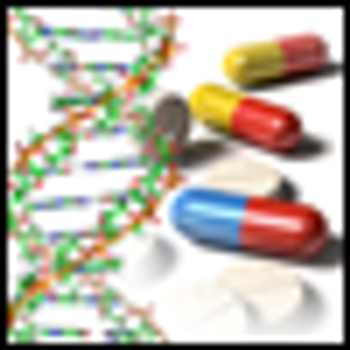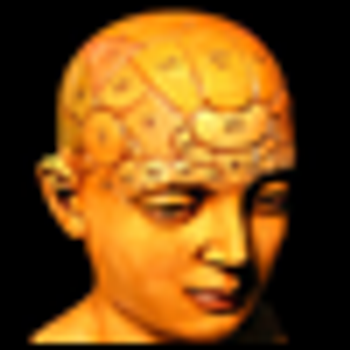
Recently, NARSAD presented its achievement awards for 2010-awards given to physicians and scientists doing cutting-edge work to better understand the mechanisms and causes of mental illness.

Recently, NARSAD presented its achievement awards for 2010-awards given to physicians and scientists doing cutting-edge work to better understand the mechanisms and causes of mental illness.

These issues-among others-raise this question: Is the addition of a new diagnosis such as TDD to DSM-5 the best way to manage the issue of classification of youths with chronic, severe irritability and potential misdiagnosis of bipolar disorder?

New research into cholesterol-lowering statin drugs and serotonin-1A receptors may help explain the relationships between cholesterol levels and symptoms of anxiety and depression.

Clearly, we all share the goals of respecting-not “medicalizing”-ordinary grief; as well as recognizing and treating clinically significant depression. We differ with Dr Frances in how to achieve these goals, while remaining faithful to the best available scientific data.

My colleague Allen Frances is rightly concerned with the risk of over-calling normal grief as major depression - - that is, the risk of "false positives" - - if the DSM-IV "bereavement exclusion" is dropped in the DSM-5 while the 2-week minimum duration criterion is retained.

In the debates around DSM-5, a central figure has been Allen Frances, whose views seem to elicit sympathy from many unhappy with the DSM system (the 4th edition of which Dr. Frances led).

The basic problem is that the body is extremely complicated and most diseases don't arise from anything resembling simple genetic causes. We are the miraculous result of an exquisitely wrought DNA engineering that has to get trillions and trillions of steps just right. But any super-complicated system will have its occasional chaotic glitch.

I just finished reading Dr Zucker’s retort to Dr Frances’ critique of proposed categories for paraphilias in DSM5, as well as Dr Frances’ reply.

The overall effectiveness of electroconvulsive therapy (ECT) is well known, but its speed of action is much less talked about. Here I review what is known about the time course of action of ECT in depression.

I often get asked if practical consequences should play an important role in DSM5 decisions. It was posed again yesterday in response to my blog "Bipolar II Revisited" which tangentially raised the issue.

Help in Clinical Decision Making

Diagnostic Dilemmas-Effective Treatment Approaches

DSM-IV provides separate categories for Substance Abuse and Substance Dependence. The typical substance abuser is someone who gets into recurrent, but intermittent, trouble as a consequence of recreational binges. This is in contrast to the continuous and compulsive pattern of use that is typical of DSM-IV Substance Dependence.

It is safe to say that few authors of mental health–related books would introduce themselves by presenting these credentials:

Writer Jonah Lehrer caused quite a stir with his recent article in the New York Times Magazine, with the unfortunate title, “Depression’s Upside.” I have a detailed rejoinder to this misleading article posted on the Psychcentral website.

It is generally held that the offspring of parents with bipolar disorder (BD) are at risk for BD. The degree of risk is an important question for both clinicians and parents. A recent study of bipolar offspring by Birmaher and colleagues1 sheds light on this issue.

During my medical training in the early 1980s, I attended a Grand Rounds on health care reform. Sleep-deprived physicians-in-training are easily conditioned to snooze upright in their auditorium seats, and economics is not an interest of choice for me, but when the speaker told us that there would be no solution to rising health care costs except to fracture the bond between patient and doctor, I found myself engaging in nightmarish fantasies that in subsequent decades have come true.

After formulating and signing “Melancholia: A Declaration of Independence,” an international cadre of psychiatrists recently launched a campaign to have the upcoming DSM-V recognize melancholia as a distinct syndrome rather than as a specifier for the mood disorders of major depression and bipolar disorder.

The United States Census Bureau projects that by 2010 nearly 13% of the US population will be over the age of 65. The elderly are one of the most rapidly growing segments of the US population and are expected to account for more than 20% of the total population by 2050.1 In 2001, the prevalence of dementia in North America was 6.4%. A 49% increase in the number of people with dementia is expected by 2020, and a 172% increase by 2040.2 Patients with dementia may lack the capacity to consent to treatment. The need to evaluate capacity to consent to treatment will therefore increase as the aging population grows.

Obesity has emerged as a significant threat to public health throughout the developed world. The World Health Organization defines overweight as a body mass index of 25.0 to 29.9 kg/m2 and obesity as a BMI of 30.0 kg/m2 or greater.1 Nearly two-thirds of Americans are overweight or obese according to these criteria.2 Numerous health problems, including diabetes, cardiovascular disease, arthritis, and cancer, are associated with obesity. In addition, overweight and obese persons are more likely than their normal-weight peers to have a variety of psychiatric disorders.

The editors of Psychiatric Times interview Vladimir Maletic, MD, PA, clinical professor of neuropsychiatry and behavioral science at the University of South Carolina School of Medicine, Columbia; founding member of the Integrative Neurobiology Educational Alliance; and member of the U.S. Psychiatric and Mental Health Congress 2009 advisory board.

Telemedicine-the use of electronic technologies to deliver medical care at a distance-continues to gain popularity and widespread use in all medical specialties, including psychiatry. However, many residents enter their training without any clinical experience in telemedicine in general or its applications in psychiatry.

Research emerging from the field of emotion science suggests that individuals who have anxiety and mood disorders tend to experience negative affect more frequently and more intensely than do healthy individuals, and they tend to view these experiences as more aversive, representing a common diathesis across anxiety and mood disorders.1-5 Deficits in the ability to regulate emotional experiences, resulting from unsuccessful efforts to avoid or dampen the intensity of uncomfortable emotions, have also been found across the emotional disorders and are a key target for therapeutic change.

From time to time, health conditions emerge that are relative “orphans” when it comes to having the resources of a health care discipline or subspecialty to take ownership or accept responsibility for developing the body of knowledge that underlies their systematic evaluation and treatment. Female sexual dysfunction (FSD) is such a class of conditions.

Lecturing around the country has left us with the powerful impression that both psychiatrists and primary care physicians are hungry for new ways to think about and treat depression and the myriad symptoms and syndromes with which it is associated-including attention deficit disorder, insomnia, chronic pain conditions, substance abuse, and various states of disabling anxiety. Primary care physicians also seem especially excited to learn that depression is not just a psychiatric illness but a behavioral manifestation of underlying pathophysiological processes that promote most of the other conditions they struggle to treat-including cardiovascular disease, diabetes, cancer, and dementia.1,2